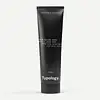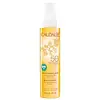What's inside
What's inside
 Key Ingredients
Key Ingredients

 Benefits
Benefits

 Concerns
Concerns

 Ingredients Side-by-side
Ingredients Side-by-side

Water
Skin ConditioningPropanediol Dicaprylate
EmollientDiethylamino Hydroxybenzoyl Hexyl Benzoate
UV FilterMyristyl Myristate
EmollientEthylhexyl Triazone
UV AbsorberTitanium Dioxide
Cosmetic ColorantBis-Ethylhexyloxyphenol Methoxyphenyl Triazine
Skin ConditioningOryza Sativa Starch
AbsorbentPolyglyceryl-6 Stearate
EmollientBehenyl Alcohol
EmollientPhenylbenzimidazole Sulfonic Acid
UV AbsorberDiisostearoyl Polyglyceryl-3 Dimer Dilinoleate
Emollient1,2-Heptanediol
Skin ConditioningPropanediol
SolventSodium Stearoyl Glutamate
CleansingAloe Barbadensis Leaf Juice Powder
Skin ConditioningCaprylic/Capric Triglyceride
MaskingSodium Hydroxide
BufferingStearic Acid
CleansingPolyglyceryl-6 Behenate
Emulsion StabilisingAlumina
AbrasiveSodium Gluconate
Skin ConditioningAcacia Senegal Gum
MaskingXanthan Gum
EmulsifyingO-Cymen-5-Ol
AntimicrobialCitric Acid
BufferingWater, Propanediol Dicaprylate, Diethylamino Hydroxybenzoyl Hexyl Benzoate, Myristyl Myristate, Ethylhexyl Triazone, Titanium Dioxide, Bis-Ethylhexyloxyphenol Methoxyphenyl Triazine, Oryza Sativa Starch, Polyglyceryl-6 Stearate, Behenyl Alcohol, Phenylbenzimidazole Sulfonic Acid, Diisostearoyl Polyglyceryl-3 Dimer Dilinoleate, 1,2-Heptanediol, Propanediol, Sodium Stearoyl Glutamate, Aloe Barbadensis Leaf Juice Powder, Caprylic/Capric Triglyceride, Sodium Hydroxide, Stearic Acid, Polyglyceryl-6 Behenate, Alumina, Sodium Gluconate, Acacia Senegal Gum, Xanthan Gum, O-Cymen-5-Ol, Citric Acid
Water
Skin ConditioningDicaprylyl Carbonate
EmollientVitis Vinifera Fruit Water
Skin ConditioningDibutyl Adipate
EmollientIsoamyl P-Methoxycinnamate
UV AbsorberPropanediol
SolventButyl Methoxydibenzoylmethane
UV AbsorberC20-22 Alkyl Phosphate
EmulsifyingEthylhexyl Triazone
UV AbsorberC20-22 Alcohols
Emulsion StabilisingBenzotriazolyl Dodecyl P-Cresol
UV AbsorberBis-Ethylhexyloxyphenol Methoxyphenyl Triazine
Skin ConditioningGlycerin
HumectantCaprylyl/Capryl Glucoside
CleansingParfum
Masking1,2-Hexanediol
Skin ConditioningCetearyl Alcohol
EmollientGlyceryl Stearate
EmollientSodium Hydroxide
BufferingPalmitoyl Grape Seed Extract
Skin ConditioningPicea Abies Wood Extract
Vitis Vinifera Juice
AntioxidantCitric Acid
BufferingO-Cymen-5-Ol
AntimicrobialPolyacrylate Crosspolymer-6
Emulsion StabilisingTocopheryl Acetate
AntioxidantXanthan Gum
EmulsifyingSodium Benzoate
MaskingPotassium Sorbate
PreservativeTocopherol
AntioxidantBenzyl Benzoate
AntimicrobialBenzyl Salicylate
PerfumingCitronellol
PerfumingGeraniol
PerfumingHexyl Cinnamal
PerfumingLinalool
PerfumingWater, Dicaprylyl Carbonate, Vitis Vinifera Fruit Water, Dibutyl Adipate, Isoamyl P-Methoxycinnamate, Propanediol, Butyl Methoxydibenzoylmethane, C20-22 Alkyl Phosphate, Ethylhexyl Triazone, C20-22 Alcohols, Benzotriazolyl Dodecyl P-Cresol, Bis-Ethylhexyloxyphenol Methoxyphenyl Triazine, Glycerin, Caprylyl/Capryl Glucoside, Parfum, 1,2-Hexanediol, Cetearyl Alcohol, Glyceryl Stearate, Sodium Hydroxide, Palmitoyl Grape Seed Extract, Picea Abies Wood Extract, Vitis Vinifera Juice, Citric Acid, O-Cymen-5-Ol, Polyacrylate Crosspolymer-6, Tocopheryl Acetate, Xanthan Gum, Sodium Benzoate, Potassium Sorbate, Tocopherol, Benzyl Benzoate, Benzyl Salicylate, Citronellol, Geraniol, Hexyl Cinnamal, Linalool
 Reviews
Reviews

Ingredients Explained
These ingredients are found in both products.
Ingredients higher up in an ingredient list are typically present in a larger amount.
You might know this ingredient as Tinosorb S or Bemotrizinol. It is a UV filter that covers both UVA and UVB rays.
This ingredient has two peak UV absorption peaks ( 310 and 340 nm) and is able to absorb both UV-A and UV-B rays. This ingredient works by preventing UV rays from reaching and damaging your skin.
On top of that - it is highly photostable and helps prevent the photodegration of other sunscreen ingredients such as avobenzone.
Tinosorb S is allowed in the EU, Australia, and Asia. It is close to being approved by the FDA and we'll hopefully get this ingredient in the U.S. by late 2025.
Fun fact: Tinosorb S is the most effective UV absorber at maximum concentration (measured by SPF) permitted in the EU.
This ingredient is oil-soluble, so your oil-cleansers will take this right off at night.
Learn more about Bis-Ethylhexyloxyphenol Methoxyphenyl TriazineCitric Acid is an alpha hydroxy acid (AHA) naturally found in citrus fruits like oranges, lemons, and limes.
Like other AHAs, citric acid can exfoliate skin by breaking down the bonds that hold dead skin cells together. This helps reveal smoother and brighter skin underneath.
However, this exfoliating effect only happens at high concentrations (20%) which can be hard to find in cosmetic products.
Due to this, citric acid is usually included in small amounts as a pH adjuster. This helps keep products slightly more acidic and compatible with skin's natural pH.
In skincare formulas, citric acid can:
While it can provide some skin benefits, research shows lactic acid and glycolic acid are generally more effective and less irritating exfoliants.
Most citric acid used in skincare today is made by fermenting sugars (usually from molasses). This synthetic version is identical to the natural citrus form but easier to stabilize and use in formulations.
Read more about some other popular AHA's here:
Learn more about Citric AcidEthylhexyl Triazone is a modern chemical sunscreen that protects from UV-B radiation.
It is the most effective of existing UV-B filters, as it provides the highest level of photo-stable absorption. It protects from the entire UV-B range (280 to 320nm), with it's highest level of protection at 314nm.
Ethylhexyl Triazone is oil soluble, oderless and colorless, which mean it is able to be incorporated into a variety of different formulations.
It is not currently available within the United States due to slow changing FDA regulations. Outside of the US, it is used in formulations at concentrations up to 5%.
Learn more about Ethylhexyl TriazoneThis ingredient is more commonly known as IPMP or Isopropyl Methylphenol. It is a preservative and has antimicrobial properties.
According to the EPA, this ingredient is allowed for use in cleansers, creams, powders, bath products, toothpaste, perfume, and more.
Propanediol is an all-star ingredient. It softens, hydrates, and smooths the skin.
It’s often used to:
Propanediol is not likely to cause sensitivity and considered safe to use. It is derived from corn or petroleum with a clear color and no scent.
Learn more about PropanediolSodium Hydroxide is also known as lye or caustic soda. It is used to adjust the pH of products; many ingredients require a specific pH to be effective.
In small amounts, sodium hydroxide is considered safe to use. However, large amounts may cause chemical burns due to its high alkaline.
Your skin has a natural pH and acid mantle. This acid mantle helps prevent harmful bacteria from breaking through. The acid mantle also helps keep your skin hydrated.
"Alkaline" refers to a high pH level. A low pH level would be considered acidic.
Learn more about Sodium HydroxideWater. It's the most common cosmetic ingredient of all. You'll usually see it at the top of ingredient lists, meaning that it makes up the largest part of the product.
So why is it so popular? Water most often acts as a solvent - this means that it helps dissolve other ingredients into the formulation.
You'll also recognize water as that liquid we all need to stay alive. If you see this, drink a glass of water. Stay hydrated!
Learn more about WaterXanthan gum is used as a stabilizer and thickener within cosmetic products. It helps give products a sticky, thick feeling - preventing them from being too runny.
On the technical side of things, xanthan gum is a polysaccharide - a combination consisting of multiple sugar molecules bonded together.
Xanthan gum is a pretty common and great ingredient. It is a natural, non-toxic, non-irritating ingredient that is also commonly used in food products.
Learn more about Xanthan Gum